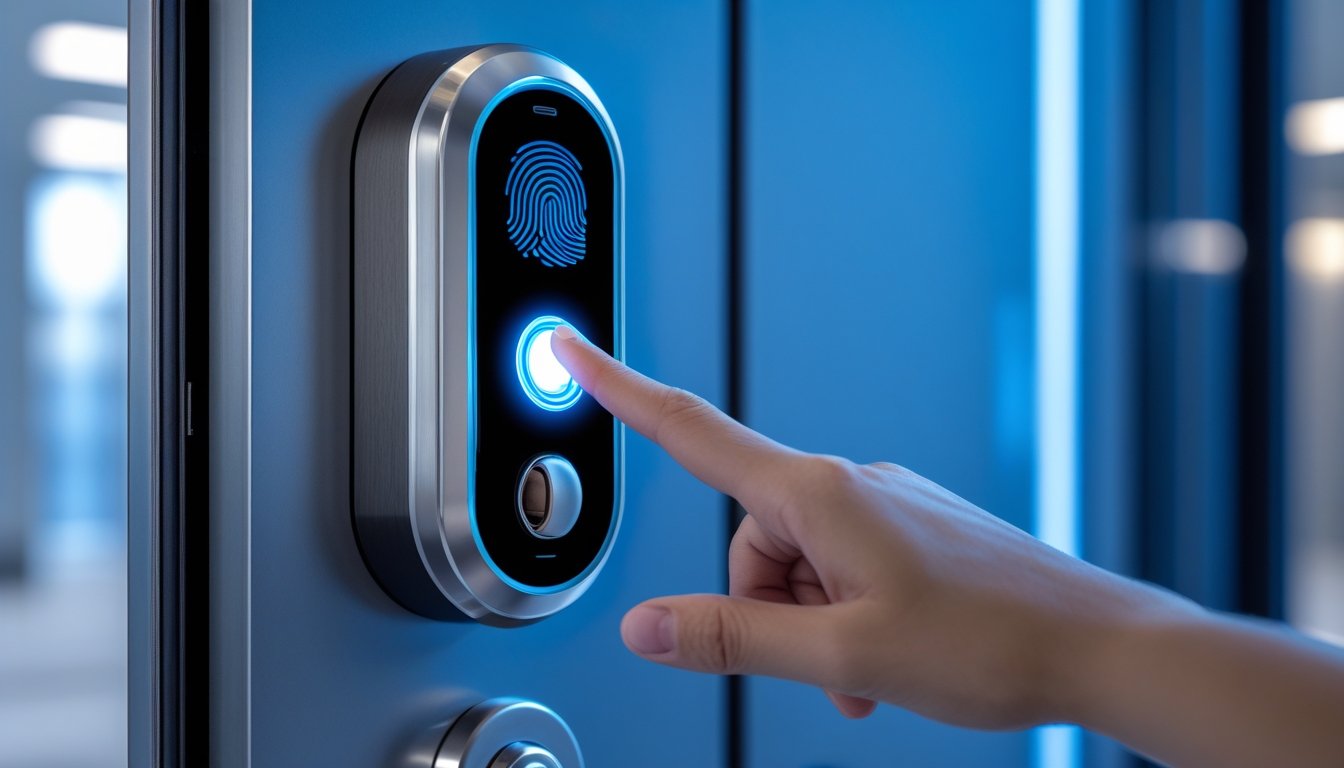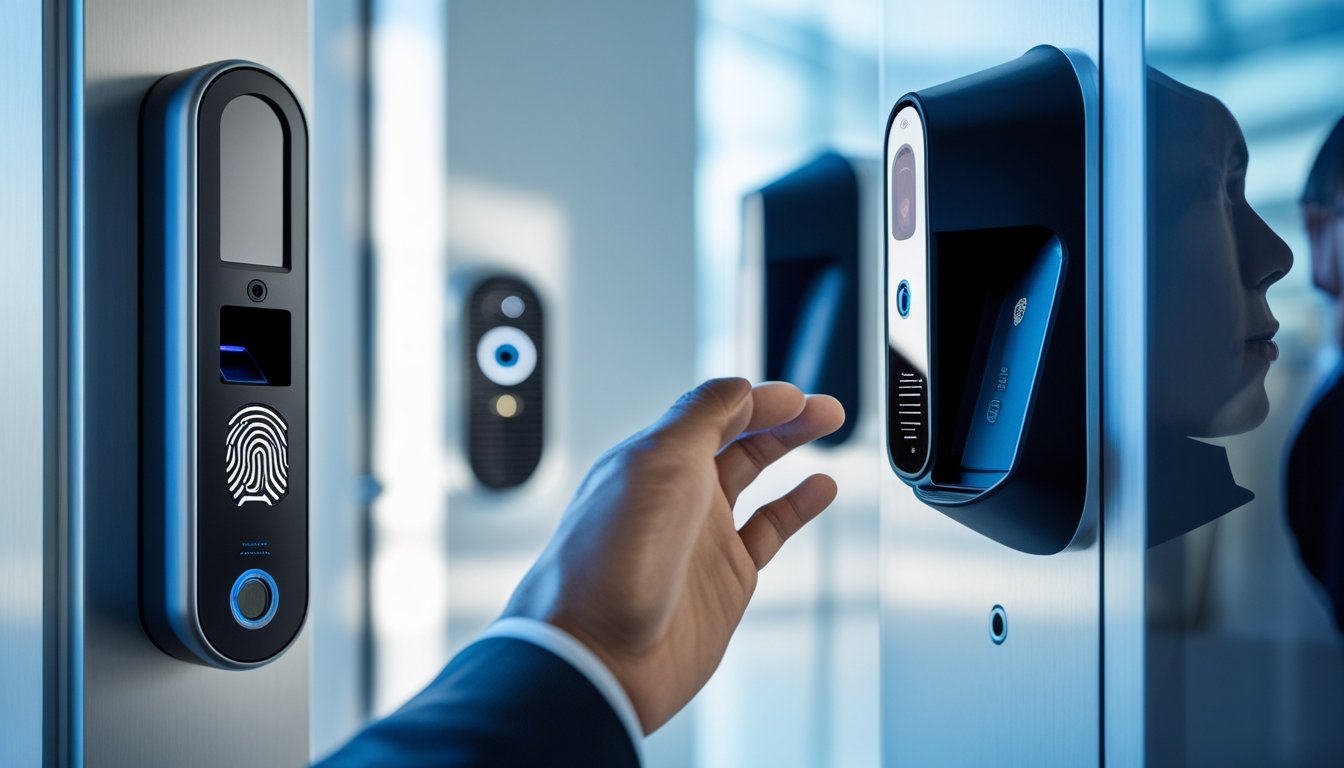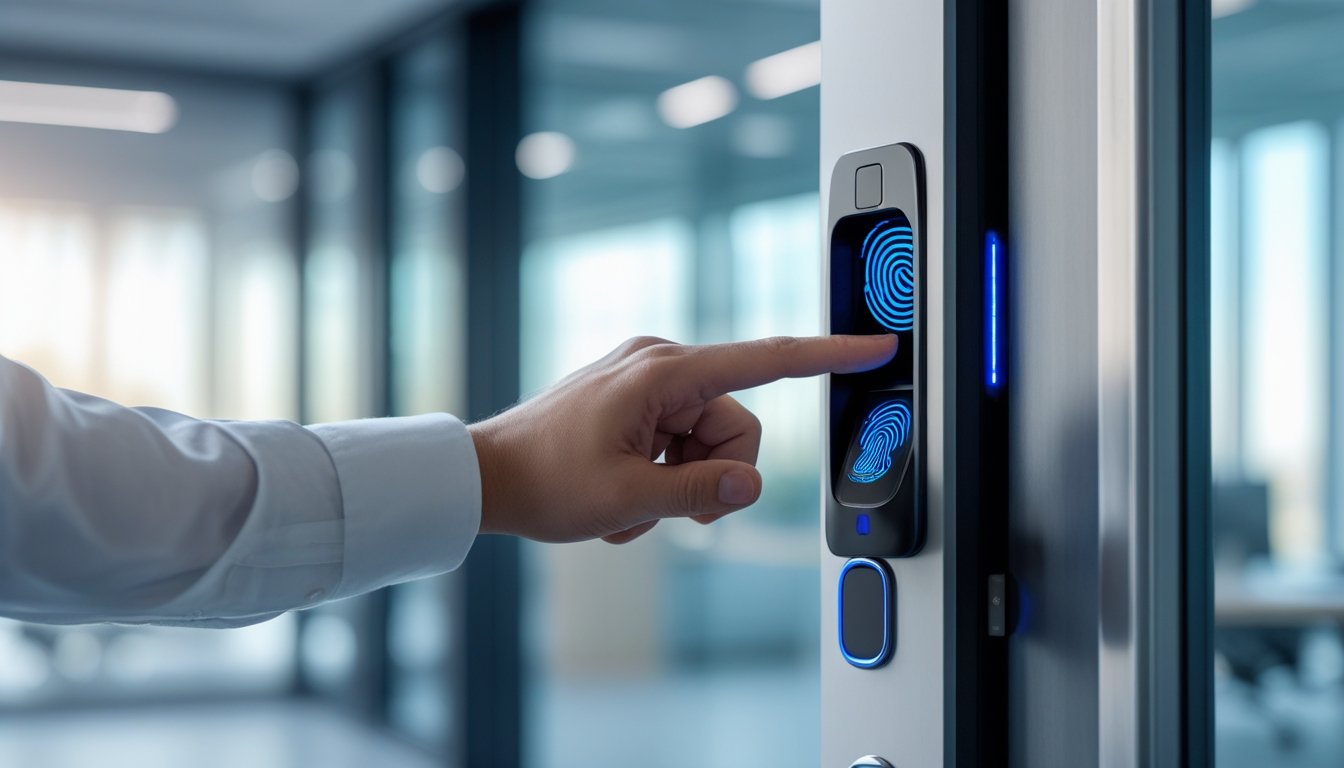Late updated: 17 Oct 2025 11:10
Written by: Elena Prescott
Exploring Biometric Locks for Enhanced Security: The Future of Access Control
Biometric locks have emerged as a revolutionary tool in the realm of security, providing a robust alternative to traditional mechanisms. With the advent of this innovative technology, we no longer need to worry about misplaced keys or forgotten combinations. This cutting-edge solution provides heightened security by utilising unique biological characteristics, such as fingerprints or facial recognition, making them nearly impossible to duplicate or forge.

As security concerns become paramount for homes and businesses, the appeal of biometric locks is quickly spreading. These locks offer not just enhanced protection but also a level of convenience that traditional systems cannot match. By utilising advanced algorithms and sensors, biometric systems ensure that access is granted only to registered users, minimising the risk of unauthorised entry.
It’s crucial for us to dive deeper into how these locks work and the various applications they offer. Understanding the different types of biometric systems and their unique benefits can help us make informed decisions about incorporating them into our security strategies. Let's explore the multifaceted world of biometric locks and see how they can redefine our approach to safeguarding spaces.
Key Takeaways
- Biometric locks use unique traits for enhanced security.
- They offer both superior protection and user convenience.
- Exploring different types helps choose the right locking system.
Key Concepts of Biometric Locks and Enhanced Security
Biometric locks represent an advanced security solution that leverages unique biological traits to ensure safe and authorised access. By comparing them with traditional locks and examining their role in preventing unauthorised access, we see a significant leap in security technology.
How Biometric Locks Work
Biometric locks function by scanning and storing unique biological traits. When an individual attempts access, the system compares the presented trait with the stored data. This method replaces the need for traditional keys or codes.
Key advantages include enhanced security and improved convenience. Unlike conventional methods, which can be bypassed with duplicate keys or guessed codes, biometric systems offer a reliable and secure approach to access control.
Biological Traits Used for Authentication
The biological traits used by biometric locks are unique to each person. Commonly used traits:
- Fingerprints: Most prevalent due to high uniqueness and ease of use.
- Facial Recognition: Involves analysing facial features and contours.
- Retina Scanning: Provides robust security by examining the patterns of a user's retina.
Each of these methods offers a distinct layer of security, reducing unauthorised access risks significantly.
Comparison with Traditional Locks
Traditional locks rely on basic mechanisms like key and tumbler systems. These are susceptible to picking or key duplication, posing significant security risks. In contrast, biometric locks derive security from unique personal characteristics.
Some points of comparison:
- Security Level: Biometric locks offer higher security, minimising chances of breaches.
- Convenience: No keys to lose or combinations to remember.
- Cost: While initially more expensive, biometric locks provide long-term savings by reducing potential security breaches.
Role in Preventing Unauthorised Access
Biometric locks excel in their role to prevent unauthorised access. The unique nature of biological traits makes it extremely difficult for unauthorised individuals to bypass these systems. Additionally, advanced encryption ensures that stored data is secure, further protecting against hacking attempts.
This layer of security is invaluable in settings where high-security standards are paramount. By eliminating the weaknesses of traditional security devices, biometric systems enhance protection measures significantly.
Types and Applications of Biometric Locking Systems

Biometric locking systems use unique physical or behavioural characteristics for enhanced security and access control. These advanced solutions, such as fingerprint scanning and facial recognition, offer convenience and a high level of protection. Let’s explore these various types and their applications to better understand their roles in modern security systems.
Fingerprint Scanners and Fingerprint Recognition
Fingerprint scanners are perhaps the most widespread form of biometric locks. By analysing distinct fingerprint patterns, these systems provide a high degree of accuracy. They eliminate the need for keys, offering a keyless entry solution that appeals to both residential and commercial sectors.
Industries favour fingerprint recognition for its reliability and audit trail capabilities, ensuring that all access attempts are recorded. Implementation in smart home systems allows homeowners to secure entry points without physical keys. Privacy concerns are minimal as the data is stored in a form that is difficult to reverse-engineer. The simplicity and effectiveness of fingerprint recognition locks make them a popular choice among users prioritising security.
Facial Recognition Technology
Facial recognition has gained popularity due to its convenience and non-contact method of identifying users. By analysing unique facial features, these systems provide robust security without necessitating direct interaction with the lock. This technology is frequently used in office buildings and high-security areas, where it offers speed and efficiency during the verification process.
Access control systems employing facial recognition are often integrated with advanced surveillance cameras. This integration enhances home security setups by providing real-time alerts on unauthorised access. Despite its accuracy, privacy remains a contentious issue, as facial data could potentially be misused. However, facial recognition continues to present a promising future for both residential and commercial security systems.
Voice Recognition and Voice Patterns
Voice recognition technology leverages unique vocal patterns to authenticate users. This type of biometric lock is less common, primarily due to environmental factors affecting performance. Nevertheless, voice recognition offers a hands-free alternative to traditional locks, making it appealing in scenarios where manual interaction might be inconvenient.
Incorporated within smart home systems, voice-activated locks provide seamless integration with virtual assistants and other IoT devices. Such systems support remote access management, enabling users to control entry points through spoken commands. While privacy issues are a consideration due to potential eavesdropping, voice recognition continues to improve in accuracy and security, promising a broader array of future applications.
Integration with Smart Home Systems
Integration of biometric locks with smart home systems enhances security by allowing for unified control of all domestic security measures. This interconnection not only improves usability but also streamlines audit trails of entry and exit. Users can remotely access these systems to manage settings, track access, and receive notifications.
Smart home integration ensures that biometric technology remains flexible and adaptable to various user preferences. Coupling fingerprint and facial recognition locks with other smart technologies offers increased convenience and customisation for the user. As technology progresses, integration capabilities expand, enabling enhanced automation and interoperability within home security networks.
Frequently Asked Questions

Biometric locks bring advanced security features by using unique physical traits and integrating seamlessly with modern security systems. They also raise questions around privacy and reliability, which we aim to address.
What are the primary types of biometric locks available for security enhancement?
Biometric locks usually use fingerprint, facial recognition, iris scanning, or voice recognition. Fingerprint locks are common due to their cost-effectiveness and accuracy. Facial recognition and iris scanning are used for more secure applications.
How do biometric locks improve security compared to traditional locking mechanisms?
Biometric locks enhance security by requiring unique biological identifiers, reducing the risk of unauthorised access. Traditional keys can be lost or duplicated, whereas biometric data, such as a fingerprint, is unique to each individual.
What measures are in place to protect against spoofing attacks on biometric locks?
To deter spoofing, manufacturers use advanced sensor technologies that detect liveness. This includes checking blood flow or subtle facial movements. Such measures ensure that only real biometric data is authenticated.
Can biometric locks be integrated with other smart home security systems?
Yes, most modern biometric locks can be connected to smart home ecosystems. This integration offers users remote access, real-time alerts, and the ability to monitor entry logs, enhancing overall security management.
What are the implications of privacy and data protection in the use of biometric lock technology?
Biometric systems must comply with data protection regulations to ensure user privacy. Data is typically encrypted and stored locally or securely in the cloud. Users should ensure their device provider follows robust data protection practices.
How reliable are biometric locks in extreme weather conditions or during power outages?
Biometric locks are designed to function in a variety of environmental conditions. Many include backup power options, like batteries or mechanical keys, to maintain access during power outages. Tests for temperature and moisture resistance bolster their reliability in extreme weather.
